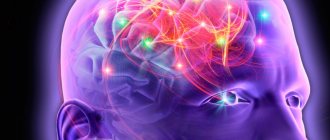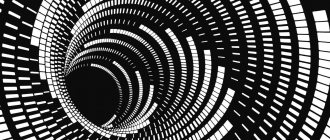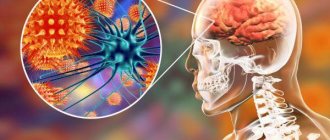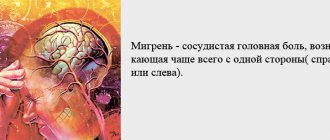Hallucinations: definition and clinical manifestations
Hallucinations should be distinguished from illusions and fantasies. Such patients see objects and hear sounds that do not really exist, and they look no less vivid and believable than real ones. The difference with illusions is that existing objects appear different to the patient. Thus, at dusk or in the dark, even a healthy person can see illusory objects due to the lack of information received. With hallucinations, attacks are often repeated: the patient hears the same voice for a long time, sees the same objects that are not in reality.
Hallucinations cannot be a variant of the norm, especially if they occur with any frequency. They represent disturbances in the perception of environmental information, and their clinical manifestations depend on the localization of the pathological process. Data enters the brain through analyzer systems: visual, auditory, sensory, olfactory, gustatory, somatosensory. If the signal is disrupted in one or more of them, the following symptoms of hallucinations may occur:
- sensations of touching the skin, movement and changing the location of the insides;
- any sounds that are absent in reality - these can be voices, music, steps, claps and others;
- foreign odors that are not noticeable to others present in the room;
- the appearance of figures, light flashes, various creatures, including non-existent ones.
Negative hallucinations should also be highlighted. In this state, a person, on the contrary, does not notice really existing signals, audio or visual. This pathology is no less dangerous than positive hallucinations, since because of it the patient may not notice objects that threaten his life. The mechanism of its development is also associated with impaired conductivity from the analyzers to the central nervous system.
Features of pathology in children
Children who have developed hypnagogic hallucinations require special attention from parents and doctors. This is evidenced by the stories of the child himself. He can share with his loved ones that someone came to him before going to bed or he heard something that didn’t really happen.
The prevalence of this pathology among children is associated with the immaturity of their psyche and nervous system. Due to vivid impressions during the day or due to overtiredness, the baby may experience various illusions before bedtime.
Physiological characteristics and development mechanism
Normally, information is perceived through five analyzer systems. They function in a complex and allow you to get a complete, three-dimensional picture of what is happening. Visual, auditory, olfactory, tactile and other types of stimuli are captured by different types of receptors and reach the brain in different ways. In the cerebral cortex (central nervous system), they are combined and analyzed, so a single, but complex picture appears in the human mind. Hallucinations are a complex of nervous disorders in which the information generated by the brain differs from reality. This can happen for several reasons:
- violation of signal capture at the level of sensory systems;
- disorders of the central nervous system;
- various poisonings and intoxications that lead to pathological changes in nervous tissue.
The trigger for the development of hallucinations can be various diseases of the sensory organs. Thus, in the absence of information normally received through the eyes (with cataracts, retinal detachment and other pathologies that lead to partial or complete loss of vision), the brain supplements the missing fragments. The mechanism of development of this phenomenon has not yet been fully studied, but there are assumptions about the presence of a kind of blockage in the central nervous system. If normally the brain is able to distinguish real objects from imaginary ones, then with visual impairment this function may disappear. However, hallucinations that develop in the absence of organic damage to sensory organs are more common.
Where do sounds and images come from?
Scientists now believe that perceiving the unreal may provide some insight into how the brain stitches together perceptions of reality. Although we are bombarded with thousands of sensations every moment, the brain almost always provides us with an uninterrupted stream of consciousness. Think about how many sounds, smells and touches you can feel right now. Listen to the noise outside, feel the fabric of your socks, feel the pages of a book under your fingers. Continuously processing everything without exception is a very unproductive way to use the brain. So he takes shortcuts wherever he can.
The brain combines incoming noise with previous experience and predicts what will happen
I'll explain this using sound as an example. Sound waves enter the auditory canal, and receptors in the inner ear convert them into electrical signals that are transmitted to the primary auditory cortex. This part of the brain processes the basic elements of sound, such as frequency and intensity. From here, the signals move to higher areas of the brain that process more complex characteristics: melody, key changes, emotional context. Instead of sending every detail up the chain of command, the brain combines incoming noise with previous experience and predicts what will happen. Thus, when you hear the beginning notes of a familiar tune, you expect a specific song to be played.
This prediction is transmitted back to the lower parts of the brain, where it is compared with the primary signal, and to the frontal lobes, which perform a kind of reality check, and only then floats into consciousness. And only if the forecast is wrong, the signal returns to the upper zones of the brain, where the next forecasts are corrected. You can test this for yourself. Anil Seth, a cognitive and computational neuroscientist at the University of Sussex, suggests listening to a specially distorted recording of speech that changes frequency in waves. At first, you will only hear a jumble of squeaks and whistles. But if you listen to the original recording, and then switch back to the distorted one, the meaning of what was said will become clear. The only thing that will change is your brain's expectations of incoming signals: it now has reliable information on which to base its predictions. “Our reality,” Seth once told me, “is nothing more than a hallucination controlled by our senses.”
But what can be considered the lever of hallucinations? I asked this question to Oliver Mason, a clinical psychologist at University College London who specializes in sensory deprivation. According to him, there are two options. First, the sensory areas of the brain sometimes exhibit spontaneous activity, which is usually suppressed and corrected by real sensory data from the surrounding world; in the deathly silence of an anechoic chamber, under the influence of the Ganzfeld method, or in conditions of loss of any of the senses, the brain can make predictions based on spontaneous activity, which sooner or later gets out of control. The second option is that the brain misinterprets the sounds produced internally; for example, in an anechoic chamber you hear blood pounding in your ears, but this sound is unfamiliar to you and you may perceive it as external.
“Once a sound is given meaning, you have a starting point—a seed from which a hallucination can grow.” Not everyone reacts the same way to an anechoic chamber. Some do not experience hallucinations at all, others understand that their consciousness is playing tricks. “Some people come out and say, ‘I’m sure there was something there,’” Mason says.
Possible reasons
Determining the cause of hallucinations is the first and most basic task faced by specialists at the Clinical Brain Institute. The prognosis for the patient and the tactics of his treatment depend on this, as well as the degree of danger of the disease and the possibility of complete rehabilitation. There are several groups of causes that may manifest the same clinical signs, and they can only be distinguished based on the results of more detailed diagnostics.
Psychiatric diseases
One of the main reasons why hallucinations occur, not counting various drug poisonings, is mental disorders. In this case, a violation of the perception of the environment occurs, which is why there is an inadequate assessment of the environment and response disorders. Psychoses of any etiology, schizophrenia and other mental illnesses are often accompanied by hallucinations and delusions. In some patients, these signs appear independently, but in severe forms, a lack of social adaptation, apathy, speech and memory impairment may also be observed. Specialists at the Clinical Brain Institute recommend treatment in a hospital setting using drug therapy and additional methods.
Organic changes in the brain
Hallucinations can also occur as a result of brain diseases. There are no disturbances in peripheral sensory organs (eyes, nose). When certain areas of the cerebral cortex are damaged or irritated, the patient experiences any type of hallucinations. The following pathologies can be the causes of this phenomenon:
- atherosclerosis - cholesterol deposits on the vascular walls, which reduce the diameter of blood vessels, reduce their strength and elasticity, as a result of which the supply of oxygen to the brain decreases;
- short-term increase in blood pressure - also leads to impaired circulation in some parts of the brain;
- stroke is an acute disorder of cerebral circulation, which leads to dangerous consequences;
- Dementia is an acquired, progressive disorder of cognitive function (deterioration of memory, speech), most often manifested in old age.
Hallucinations with organic brain lesions are only one of the symptoms. Depending on the extent and location of the damage, other signs may be observed: impaired motor and cognitive function, delirium, fainting and even paralysis. It is worth understanding that any disorders of the blood supply and brain function can cause dangerous complications, even a regular migraine attack.
Other diseases
Hallucinations can be either one of the main symptoms of some diseases or a nonspecific sign. Their appearance may indicate the development of pathologies of the nervous system, which include:
- delirium - mental disorders that occur with dizziness and other characteristic symptoms;
- migraines - acute attacks of headache associated with impaired cerebral circulation;
- Huntington's disease is a hereditary mental disorder that becomes especially pronounced in middle age;
- schizophrenia is a common mental disorder that can occur with more or less severe symptoms and manifest itself in attacks;
- Parkinson's disease, if it has a long progressive course;
- Alzheimer's disease - severe cases may also be accompanied by impaired brain activity.
Hallucinations can occur with varying degrees of severity. In some patients they appear as flashes of light or tinnitus, while in others they include distinct voices and lifelike figures.
Hallucinations and sleep
Many mental disorders in the initial stages manifest themselves as hallucinations only in a sleepy state. They are especially characteristic of narcolepsy, a disease characterized by various sleep disorders. Such patients periodically experience attacks of uncontrolled drowsiness, which are accompanied by decreased muscle tone and hallucinations while maintaining the ability to adequately respond to external stimuli.
Sleep-related hallucinations can be divided into two categories:
- hypnagogic - appear when trying to fall asleep and represent images of varying degrees of realism;
- hypnopompic - arise at the moment of awakening and can persist for some time, and therefore a person cannot adequately perceive the surrounding reality.
It is worth understanding that periodic occurrences of hallucinations before or after sleep are normal even for a healthy person. During this period, the perception of the environment changes, so the nervous system needs time to adapt. Most often, sleep disorders occur against the background of severe fatigue or stressful situations.
Other reasons
Hallucinations can be caused by any pathology that affects the functioning of the central nervous system. These are congenital or acquired diseases, as well as intoxications of various origins. So, this symptom can be caused by the following factors:
- use of certain types of drugs, large amounts of alcohol;
- increase in body temperature to critical levels;
- poisoning with toxic substances, including some mushrooms;
- pathologies of other organs and systems in which the process of removing toxins is disrupted and they irritate nervous tissue (liver cirrhosis, late-stage renal failure);
- severe dehydration;
- traumatic brain injuries.
Drinking large amounts of caffeine can also cause hallucinations. They will manifest themselves in a mild form (tinnitus, the appearance of spots in the field of vision) and will quickly stop, but they should not be allowed to reappear.
Therapy
The method of treating the disorder is determined by the reasons that provoked it. All types of hallucinations in neuroses can be treated with medication. Depending on the severity of the patient’s condition, sedatives (valerian, motherwort), antipsychotics (Clozapine, Risperidone), antidepressants (Fluvoxamine, Fluoxetine), tranquilizers (Sibazon, Valium) are prescribed.
Additionally, patients are recommended physical therapy and psychological consultations. It is also necessary to change your lifestyle, which, in the absence of serious pathologies, will lead to a complete cure:
- Maintaining a daily routine. Going to bed and waking up should occur at approximately the same time (both weekdays and weekends).
- It is recommended to allocate 7-8 hours for sleep. Rest less or more is harmful for a person.
- It is advisable to organize your day so that the body’s biorhythms coincide with natural rhythms. It is recommended to wake up at dawn and go to bed no later than 10 pm.
- The use of alcohol, drugs and smoking is strictly prohibited.
- You should limit the amount of coffee and tea you drink as much as possible, especially in the afternoon.
- It is advisable to protect yourself from negative events and learn to deal with stress and bad thoughts.
- It is necessary to eat right and lead an active lifestyle.
Classification of hallucinations
Hallucinations are a complex disorder. Their clinical signs vary from patient to patient, and in some cases remain invisible to others. For their timely detection, as well as for the convenience of diagnosis, classifications have been developed according to various criteria. First of all, true and pseudohallucinations are distinguished. The first of them are realistic and fit harmoniously into the surrounding environment. In the patient’s consciousness they do not differ from real objects. Pseudohallucinations can be distinguished by the following symptoms:
- look foreign, differ from real objects, and a person understands their difference from real sounds, objects, sensations;
- auditory hallucinations are sounds that the patient hears not with his ears, but they appear inside his head or stomach;
- changes in the patient’s behavior - due to the unreality of what is happening to him and the belief that only he can experience such hallucinations, therefore he associates them with fictitious persecutors.
Pseudohallucinations occur during internal disorders and often indicate the development of schizophrenia. Patients understand that the situation that is happening to them is far from normal, and that other people do not experience the changes that are happening to them. However, patients do not call these phenomena hallucinations - more often you can hear about alien persecution and receive other unrealistic explanations.
A separate classification identifies several types of hallucinations according to the methods of their perception:
- auditory - any sounds and voices;
- visual - appear in empty space, and are not a distorted perception of other forms and objects (as with illusions);
- olfactory - the appearance of odors that no one except the patient perceives;
- tactile (more often associated with age-related mental changes or drug use) - itching, tingling of the skin, then visual hallucinations may also appear in the form of insects and other explanations for these sensations;
- gustatory - often a symptom of poisoning delirium, in which the patient is afraid of being poisoned;
- visceral - patients claim that they have a certain object inside them.
Hallucinations can occur separately or in combination. Their diagnosis is difficult, since they largely rely on data from people with mental disorders. According to statistics, visual forms appear more often in acute psychoses, and auditory forms more often in chronic forms of schizophrenia, but in most cases the type of perception of hallucinations does not have any particular diagnostic significance. It is important to distinguish which varieties can harm the patient and others, and which can be considered safe.
- Imperative hallucinations are imperative in nature. Patients may hear instructions for action in their own heads, but are afraid to admit it. This is the most dangerous variety because it can cause aggression.
- Associative - complex hallucinations. In such patients, visual images are complemented by auditory accompaniment and vice versa.
- Reflex - characterized by the presence of a real stimulus that is perceived incorrectly. They should be distinguished from illusions: in this case, the patient can perceive both the stimulus and the hallucination.
- Extracampal - with such hallucinations, the patient claims that he sees objects that are outside his field of vision (behind or to the side). All varieties, except the first, usually do not pose a danger to the patient and his environment.
Hallucinations can occur in attacks or accompany the patient constantly. In the second case we are talking about hallucinosis syndrome. Voices or images often remain the same: you can hear about a specific voice that sounds in a person's head.
general characteristics
Visual hallucinations are the second most common after auditory hallucinations.
They are perceived as really existing objects, therefore the behavior of patients is determined by the content of false perceptions. Hallucinating patients can stare at empty walls for a long time, dismiss the vision, avoid it, go around it, changing the original route. Another feature of visual hallucinations is the projection of images outward. True hallucinations are assimilated with real objects, for example, insects are perceived to be crawling on a wall. Another type of symptom is pseudohallucinations. They are perceived as something anomalous, subjective, do not have the properties of objective reality, arise without any reason, are of a violent or obsessive nature, intertwined with delusional ideas of influence.
https://www.youtube.com/watch?v=4QDkA9cDEB8
The content of visual hallucinations can be elementary - smoke, fog, flashes, lightning, sparks; simple – static simple objects; complex - dynamic phenomena united by some idea. Simple and complex hallucinations are divided into zoopsic (images of animals), polyopic (many identical visions), demonomaniacal (images of mythical characters), panoramic, scene-like, endoscopic (vision of objects inside the body), autovisceroscopic (vision of one’s own internal organs).
Hypnagogic illusions are short-term visions that occur while falling asleep, sometimes upon awakening. The phenomenon is difficult to diagnose and can be easily confused with other disorders. It differs in that a person perceives what he sees or hears as if from the outside, without being a participant in the events taking place. At this time, the patient does not experience strong emotions and reacts to everything calmly.
The average child faces this problem more often than an adult. But they also experience similar hallucinations quite often. Typically, visions have an episodic development; several years may pass between periods of exacerbation.
Those who have encountered this problem indicate that the events taking place are more vivid than a dream. They are remembered in the smallest details. A person can see the faces of familiar and unfamiliar people, bright lights and flashes.
Diagnostic and treatment methods
Diagnosing hallucinations is a difficult task, so it is important to collect medical history from the patient and those around him. A team of professionals works at the Clinical Brain Institute: doctors will be able to determine the cause of this symptom and prescribe an effective treatment regimen, as well as provide the necessary consultations for the patient’s relatives. Examination methods are selected individually, depending on the data obtained. If the patient has a history of various bruises, open or closed craniocerebral injuries, as well as organic pathologies of the brain, the diagnosis should continue in this direction. In general, the general scheme applies:
- psychiatric examination - consultation includes a conversation with a specialist, as well as samples and tests;
- MRI or CT scan of the brain;
- Polysomnography is a method for diagnosing sleep disorders, also performed at the Clinical Brain Institute.
Treatment is selected individually. If hallucinations are caused by drugs or alcohol, you can get rid of them only after giving up their cause. Inpatient treatment is recommended, and its goal is to cleanse the body of toxins and reduce dependence on drugs and alcohol. In cases where hallucinations occur against the background of severe fatigue, a long rest is indicated, after which they pass. In other cases, drug treatment is necessary:
- neuroleptics are the main method of relieving the manifestations of mental disorders in adults and elderly patients;
- antiparkinsonian drugs, if hallucinations are caused by this particular disease;
- antidepressants - reduce the likelihood of complications;
- means to improve nutrition and blood supply to the brain.
Antipsychotics are a broad group of medications used for various types of mental disorders. Previously, their use was accompanied by a large number of side effects, but new generation drugs are safer for patients. They are mainly prescribed to older people, as well as for Alzheimer's disease. It should be understood that therapy should be carried out under the supervision of a doctor and the patient’s relatives. At the initial stage, improvements often occur, which are accompanied by a feeling of euphoria. This may lead to a desire to cancel any treatment, which is strictly not recommended. With the proper use of medications, significant results can be achieved, some manifestations of schizophrenia and psychosis can be stopped, and the patient’s mental state can be stabilized for a long time. In acute forms and significant impairment of perception, treatment is aimed at eliminating signs of aggression - even if it is impossible to completely restore the functioning of the nervous system, it is important to reduce the risks of unwanted behavior, protecting the patient and others.
The Clinical Brain Institute offers diagnostic and treatment services for patients with hallucinations. There are all conditions for a comprehensive examination, and you can also get advice from a psychiatrist. Depending on the data obtained, treatment can take place at home or in a hospital, and its success depends on many factors: the cause of hallucinations, the age of the patient and his lifestyle, as well as the reversibility of the pathological process.
Clinical Brain Institute Rating: 4/5 — 10 votes
Share article on social networks
How to help a person with hallucinations?
A person who sees and hears something that is not there is dangerous to himself and others. He needs treatment at a drug rehabilitation center. And you need to act very carefully here. After all, if a drug addict thinks that he is being watched, he is in danger, attempts by relatives to help can be regarded as the machinations of enemies. In this case, it is advisable to invite a professional narcologist to your home who knows how to work with people who have mental disorders. He will be able to convince the patient to start treatment.
If the patient is initially determined to fight hallucinations, bring him to the clinic. Here the patient will be prescribed effective sedatives, sleeping pills, etc. Along with drug treatment, the addict will also receive psychological help. And after he completely gets rid of hallucinations, it is worth thinking about comprehensive rehabilitation.
Do you want to know about the cost of services?
8 call our specialist
History of the study
Such a phenomenon as hallucination has been known to mankind since time immemorial, because a person of any era has been subject to disruptions in the psyche and, as a result, distortion of reality. However, until the 19th century, none of the scientists focused on studying and explaining this phenomenon. As a rule, a hallucination in ancient centuries was akin to a mystical skill, witchcraft, or a “vision of seers” and even a “gift from above.”
With the development of such sciences as “psychology” and “psychiatry” in the mid-19th century, scientists paid special attention to this phenomenon. Particularly worth noting is the work of Baillarger, written by the scientist in 1842, in which he outlined in detail the nature and nature of perception disorders. In his opinion, a failure in consciousness occurs due to 3 main factors:
- unwanted enhancement of memory and imagination;
- delay in analyzing what is happening;
- movement of sensory apparatus inside.
It was he who first divided the visions that arise in the patient’s head into 2 types:
- psychosensory - complete hallucinations caused through the joint work of a person’s imagination and his organs of perception;
Kandinsky is one of the first researchers of the phenomena of perception - psychic - incomplete mirages, in the process of reproduction of which only memory and imagination are involved, but the senses do not play a role.
Another scientist, V.Kh., placed special emphasis on the study of incomplete (mental) hallucinations. Kandinsky. In his opinion, pseudohallucinations arise due to stimulation of the sensory areas of the brain. In his book, this phenomenon is described as the appearance of voices “inside the head,” the appearance of visions in the “mind's eye.”
When studying pseudovisions, Kandinsky experimented on a patient. He, in turn, told how he saw an imaginary lion. Despite the fact that the image of an imaginary animal floated in the air in his direction, and soon he felt the touch of paws, the patient was not at all afraid of it, since he perfectly understood that there was no lion next to him.
Pseudohallucinations can appear in the form of thoughts. For example, in the research of L.M. Elazina, the object was a middle-aged patient who claimed that “something” was stealing her thoughts and replacing them with others - alien to her. She clearly heard what the people around her were saying, but at the same time, extraneous voices appeared in her head.
Can they be controlled?
Recently, Sylvia's musical hallucinations have noticeably accelerated, the notes ran faster and at the same time became louder. The hallucinations have developed to such an extent that when she plays a Mozart sonata on the piano and pauses, she hears the entire first movement in her mind. It's like you have a player built inside you, Sylvia says. Which is not always pleasant - for example, December can turn into a nightmare for Sylvia: “In all the stores they sing Christmas songs, and I am constantly haunted by excerpts from them - it can drive me crazy.”
Perhaps we are all permanently hallucinating—it’s just that some are more clearly aware of this.
Interestingly, her hallucinations began to obey words. The day before our meeting, Sylvia was reading and came across the word “abide.” At that very moment, the internal player began to play the spiritual hymn “Abide with Me.” An image can also “turn on” a song. Once Sylvia and her granddaughter went into a toy store, and a clown in a hat with bells caught her eye. And immediately the jester’s song from Twelfth Night, “When I was still green and small...” began to sound in my head.
Late in the afternoon I say goodbye to Sylvia, amazed at her poise, humility and healthy sense of humor in circumstances that could easily have caused mental distress. Society teaches us to fear what is outside of reality: if a person sees or hears things that no one else sees or hears, it means that his psyche is not in order. Sylvia, Max, Avinash, even my own grandmother show that this is not always true. We must fight misunderstandings without fear and speak openly about the fact that we are experiencing unusual sensations. Perhaps we are all permanently hallucinating—it’s just that some are more clearly aware of this.
Cover: "Peter"











